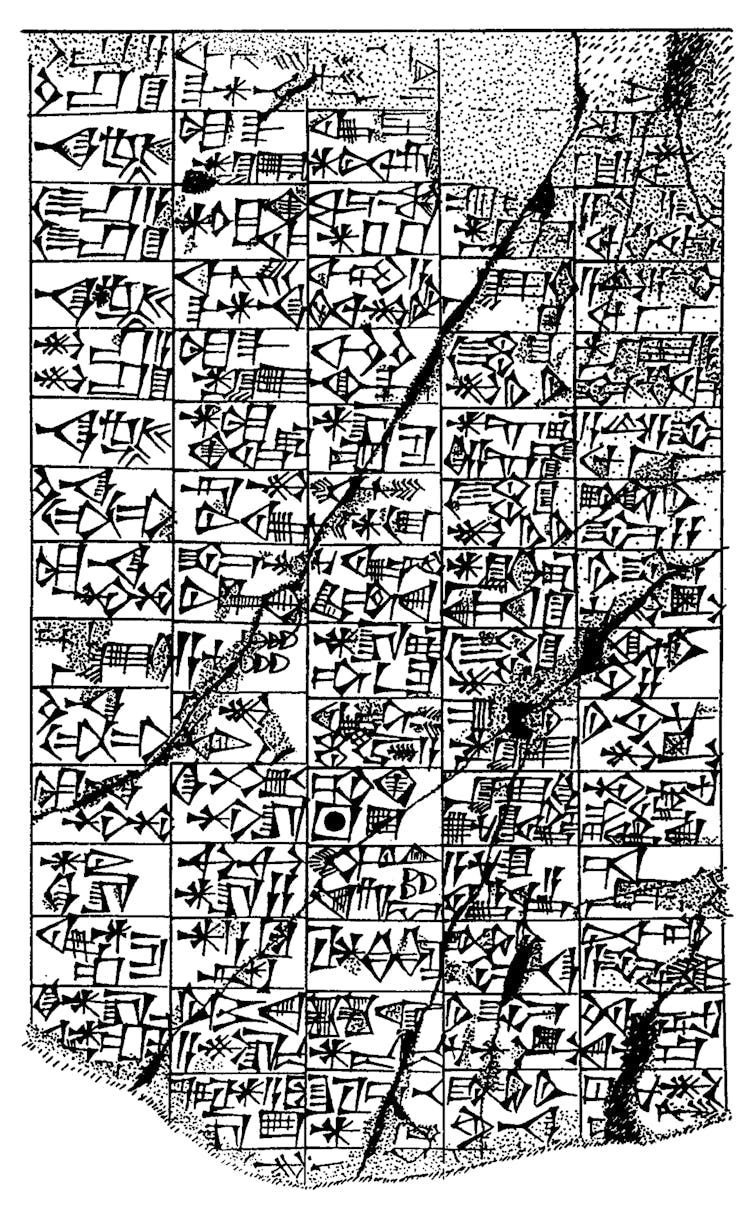Lip kissing is an act that’s so natural and common in many present-day societies it is easily taken for granted. But it’s not actually clear whether people have always been kissing, or whether its origins lie in the relatively recent past.
 An illustration of the reunion between Ulysses and Penelope, from Stories From Homer.
An illustration of the reunion between Ulysses and Penelope, from Stories From Homer.
It turns out that the history and causes for kissing are more complex than anticipated. In an article published in the journal Science, we analysed substantial amounts of overlooked evidence that challenge current beliefs that the first record of romantic-sexual kissing is from India around 1500 B.C.
Instead, lip kissing is documented in ancient Mesopotamia—present-day Iraq and Syria—from at least 2500 B.C. onward. This basically means that the recorded history of romantic-sexual kissing is at least 1,000 years older than the previous earliest known date.
Why do we kiss?
Evolutionary anthropologists have suggested that lip kissing evolved to evaluate a potential mate’s suitability, through chemical cues communicated in saliva or breath. Other proposed purposes for kissing include bringing about feelings of attachment and facilitating sexual arousal.
Lip kissing is also seen in our closest living relatives, chimpanzees and bonobos. This suggests that the behavior could be much older than our current earliest evidence in humans.
People in ancient Mesopotamia may have invented writing for the first time, though it was roughly contemporary with its invention in ancient Egypt, as well. The earliest Mesopotamian writing is from around 3200 B.C., from the city of Uruk, now in southern Iraq.
The script is called cuneiform, and it was inscribed on moist clay tablets with reeds cut into a little triangular shape. Originally, the script was used to write Sumerian, a language with no known relationship with any other. Later, it was adapted to write Akkadian, an ancient Semitic language.
Though the earliest texts we find are mainly linked to administrative practices, and largely reflect the mechanics of bureaucracy, people developed this mode of writing in subsequent centuries to include other genres of texts.
In the first half of the third millennium B.C., myths and incantations materialize in these texts and, even later, private documents about ordinary people. Some of the earliest sources mentioning the lip kiss can be found in mythological texts concerning acts by the gods that date to around 2500 B.C.
Early records
In one of these earliest instances, described on the so-called Barton Cylinder, a Mesopotamian clay artifact inscribed with cuneiform, two deities are said to have intercourse and kiss:
with the goddess Ninhursag, he had intercourse. He kissed her. The semen of seven twins he impregnated into her womb.

Later sources, such as proverbs, an erotic dialogue between a man and a woman, and a legal text, form the general impression that kissing in relation to sex, family, and friendship was likely an ordinary part of everyday life in central parts of the ancient Middle East from the late third millennium B.C. onward.
Still, it seems that romantic-sexual kissing in the open street may have been frowned upon, and it’s possible that it was preferably practiced between married couples. Society probably had a number of such social norms regarding ideal behavior. But the fact that such norms existed point to a widespread practice.
Single point of origin?
Evidence suggests that the lip kiss was practised at least in the ancient Middle East and India. This contrasts with previous observations about humanity’s earliest history of kissing. A manuscript from India dated to about 1500 B.C., for example, has previously been used to propose that the kiss was brought as a cultural practice westward from there. The older evidence from Mesopotamia suggests we can dismiss that scenario.
Considering the wide geographical distribution of the romantic-sexual kiss in ancient times, we believe that the kiss had multiple origins. And even if one were to search for a single point from where the kiss originated, one would have to find it millennia ago in prehistoric times.
A recent anthropological study has shown that the romantic-sexual kiss is not universal. However, there is ancient written documentation suggesting a tendency for its practice in societies with complex social hierarchies.
This raises a question over how widely used the sexual kiss was in the ancient world, especially in societies that cannot be traced because they did not use writing. Although some societies may not have practiced the romantic-sexual kiss, we argue it must have been known in most ancient cultures, for example due to cultural contacts.
But if future research should show that lip kissing cannot be considered near-universal in the ancient world, it will be interesting to consider the reasons why this was not a common practice. Surprisingly, the history and culture of kissing is a complex tale with many aspects yet to be revealed.
This article is republished from The Conversation under a Creative Commons license. Read the original article.







Comments